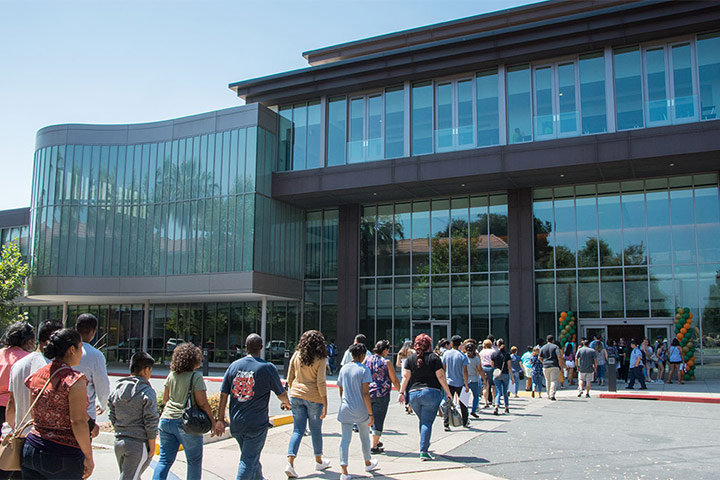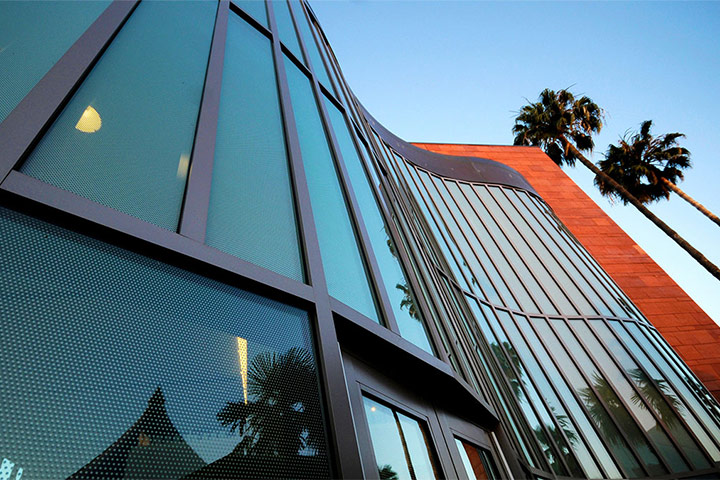La Verne Again One of Nation’s Environmentally Responsible Colleges
With Ethical Reasoning established as one of its core values, the University of La Verne maintains a strong commitment to sustainability and ensures its endeavors are conscious about the institution’s impact on the environment. This approach has again earned the University inclusion in The Princeton Review’s Guide to 332 Green Colleges: 2014 Edition, which recognizes the nation’s most environmentally responsible “green colleges.”
The guidebook honors higher education institutions that demonstrate strong commitment to sustainability in their academic offerings, campus infrastructure, activities, and career preparation. It is produced by The Princeton Review in collaboration with the Center for Green Schools at the United States Green Building Council (USGBC).
Peter Eckel, a member of the University’s Board of Trustees, was recently on hand in Washington D.C. to accept the award. Eckel is also Vice President for Governance and Leadership Programs at the Association of Governing Boards of Universities and Colleges.
Inclusion in the guide “is important because it shows the steps the University is taking toward sustainability and makes them valid, since they are matched against other universities,” said Clive Houston-Brown, Associate Vice President of Facility & Technology Services.
A key part of La Verne’s ongoing commitment to sustainability is direction provided by the Sustainable Campus Consortium (SCC), a University-wide committee led by co-chairs Houston-Brown and Dr. Christine Broussard. Additional committee representation includes students, faculty, staff, and administrators.
“Employees and students of the university from all units attend and work together to create, vet, and move forward sustainability work,” said Broussard, Professor of Biology. “Throughout the year, the group meets and discusses ongoing projects and potential new projects, and while our focus is not on getting any particular award, the group is continually looking for ideas and ways to bring those ideas to fruition. It is a wonderful synergistic effort.”
According to Houston-Brown, facilities and operations plays a strong role in sustainability because they are the arm in completing projects. Facilities takes the lead to identify and carry out projects such as a lighting retrofit to change parking lot lighting to LED lights, or the transition to low-flow faucets on most of the campus.
The University was recently recognized for upholding sustainability when building Vista La Verne Residence Hall, the first LEED Gold Facility in the city’s history. That gold certification follows construction of the University’s and City’s first-ever LEED certified building, the Sara & Michael Abraham Campus Center in 2009, which earned LEED Silver status.
“Sustainability is a central tenet of the University of La Verne,” said Broussard. “The University affirms a value system that actively supports peace with justice, respect of individuals and humanity and the health of the planet and its people.”
This is openly apparent through the University’s active involvement in the Billion Dollar Green Challenge. Started by the Sustainable Endowments Institute, the challenge encourages colleges, universities, and other nonprofit institutions to invest a combined total of $1 billion in self‐managed funds to finance energy efficiency improvements.
As one of only two California-based schools to commit to the challenge, La Verne is participating with 40 other North American colleges and universities. As a contributor, La Verne can establish a Green Revolving Fund which will be used to fund green, sustainable projects that will reduce the university’s carbon footprint.
According to Houston-Brown, each project that the University creates has two goals – Provide a sustainable impact and contribute to a reduction in operating costs. The Billion Dollar Green Challenge helps with both aspects. It allows access to the Green Revolving Investment Tracking System (GRITS 1.0), which logs all projects, tracks their environmental impact, and provides access to a library of all 41 colleges and their projects to promote the sharing of ideas.
“Sustainability is part of our core being,” said Houston-Brown. “With examples like our two LEED-certified buildings, we are living our commitment. Any buildings we do in the future will be built in the same way – with sustainability in mind.”
Plans are also underway to create a process to solicit further input from the campus community on how to be more sustainable.
“This university encourages students to be reflective about personal, professional, and societal values and supports professional and social responsibility,” said Broussard. “I would like to note and commend the collaborative nature of the Sustainable Campus Consortium; when we meet, we bring our expertise and opportunities, but we shed the barriers of our positions. We focus on being citizens of the planet, trying to make it a better place, and I am very proud of the work we have done together.”


